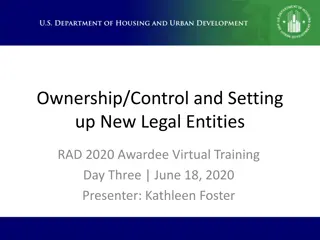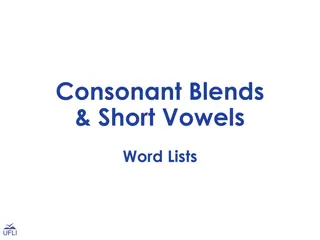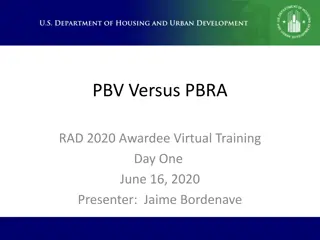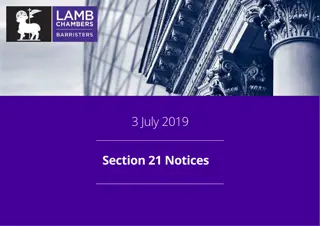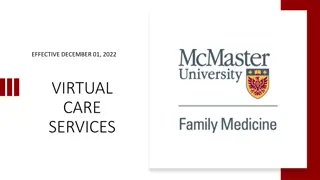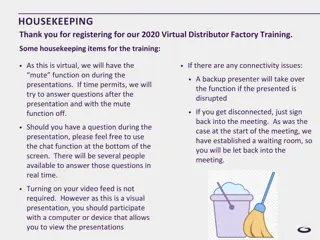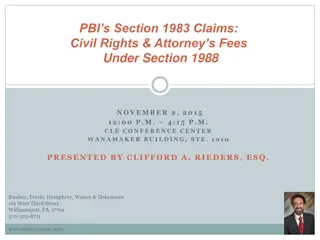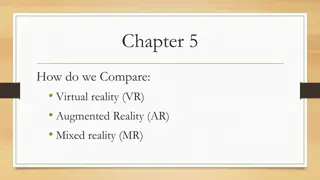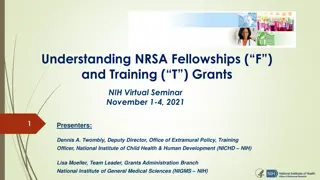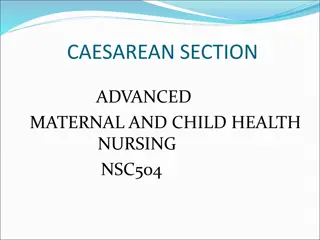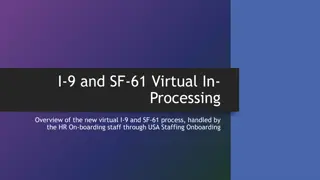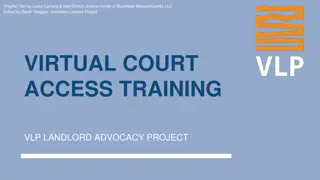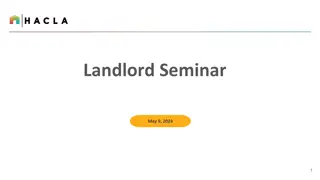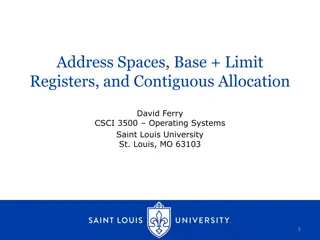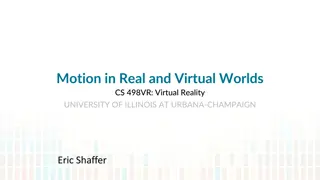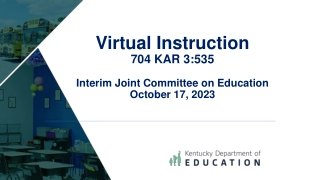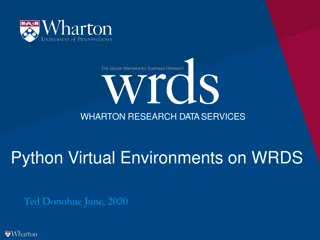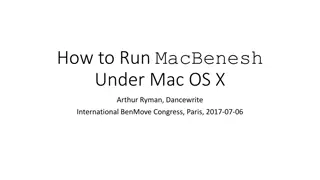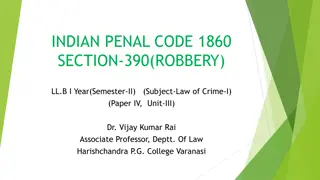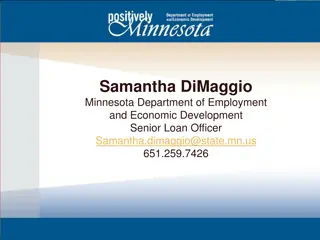RAD and Section 18 Blends Virtual Training Overview
Explore the synergy between RAD and Section 18 in public housing redevelopment and preservation strategies. Learn about Section 18 requirements, project-based vouchers, portfolio repositioning, and HUD's encouragement for PHAs to utilize a combination of RAD and Section 18. Discover tools like the 75%/25% blend and Close-out blend for increased revenue and financing support.
Download Presentation

Please find below an Image/Link to download the presentation.
The content on the website is provided AS IS for your information and personal use only. It may not be sold, licensed, or shared on other websites without obtaining consent from the author. Download presentation by click this link. If you encounter any issues during the download, it is possible that the publisher has removed the file from their server.
E N D
Presentation Transcript
RAD and Section 18 Blends RAD 2020 Awardee Virtual Training Day Four| June 23, 2020 Presenter: Will Lavy
Agenda What is Section 18? Developing a portfolio strategy Combining RAD and Section 18 at a Project RAD/Section 18 75/25 blend RAD/Section 18 Close-out Blend Processing Questions 1
What is Section 18? Section 18 of the Housing Act of 1937 authorizes the demolition or disposition of public housing. Requirements outlined in PIH 2018-04. HUD will generally approve a property under Section 18 if it is: Physically obsolete Scattered site (non-contiguous) with operational challenges Owned by a PHA with 50 units or less RAD/Section 18 blend 2
Section 18 and Project-Based Vouchers Section 18 Disposition can be used with the Project-Based Voucher program as a preservation and redevelopment tool Following Section 18 approval HUD issues new vouchers (Tenant Protection Vouchers) to PHAs for units occupied with last 24 months Vouchers can be project-based (i.e., PBV) at the former public housing site Contract rents set at reasonable rent (i.e, market rent) not to exceed 110% of FMR Tenant consent not required PBV at former public housing property is exempt from PBV income- mixing requirement and not count against PHA s PBV program cap (20%) Competitive selection generally not required 3
Portfolio Strategy HUD encourages PHAs to use a combination of RAD and Section 18 to preserve and improve their portfolio by transitioning properties to project-based Section 8 assistance 4
Portfolio Repositioning Strategy Planning Set goals for each asset: preserve, redevelop, voucher out Categorize portfolio: e.g., obsolete, scattered site, low/moderate/high needs, Sequencing: dispose of assets to generate proceeds; generate fees from financing; last 50 units eligible for Sec 18 See Asset Repositioning for PHAs webinars on RAD Resource Desk 5
RAD & Section 18 Blends HUD has also developed tools for PHAs to use RAD and Section 18 at the same project so as to increase revenue to support greater financing: RAD & Section 18 75%/25% blend RAD & Section 18 Close-out blend 6
RAD & Section 18 75%/25% Blend PIH 2018-04 established that: RAD conversions that involve new construction or substantial rehabilitation, without using 9% LIHTC, can get 25% of units approved under Section 18. Vouchers that are issued must be project-based (i.e., PBV) Property does not need to meet any other Section 18 eligibility criteria (e.g., does not need to meet obsolescence test) 7
RAD & Section 18 75%/25% Blend Sooner Haven (Oklahoma City) 150 unit garden-style property 113 units converted through RAD to PBV contract; 37 units removed through Section 18 and placed under non-RAD PBV contract Higher revenue created ability to leverage additional $2 million in debt Substantial rehab: $94k/unit 8
RAD & Section 18 75%/25% Blend RAD de minimis reduction rule applies to whole project All residents receive the same robust RAD rights and protections PHA can contribute public housing funds into the development budget Substantial Rehab = RAD scope of work where the hard construction costs, including general requirements, overhead and profit, and payment and performance bonds, exceed 60% of the HUD-published Housing Construction Costs for a given market area. See Workbook to Test HCC Threshold on RAD Resource Desk 9
RAD & Section 18 Close-Out Blend PIH 2018-04 allows a PHA to dispose of its remaining public housing ACC units through Section 18 if the PHA has 50 or fewer units If a PHA has more than 50 units, it may: a) Remove other units public housing units from its inventory through Section 18 or RAD until it has 50 or fewer units or b) RAD/Section 18 Close-out Blend - if the units are in the same project, the PHA can simultaneously convert enough public housing units under RAD that would result in the PHA having 50 or fewer units and utilize the 50 or fewer option in conjunction with the RAD conversion, rather than as separate transactions. 10
RAD & Section 18 Close-Out Blend Example: A PHA with an 80 unit high-rise converts 30 units through RAD and takes 50 units through Section 18, all processed as one HUD transaction 11
RAD & Section 18 Close-Out Blend All residents receive the same robust RAD rights and protections PHA can contribute public housing funds into the development budget PHA must agree to close-out its public housing program 12
Processing RAD & Section 18 Blends Apply for RAD for the entire project (through the RAD Resource Desk) Front-end civil rights reviews should reflect the entire project Request the use of a RAD & Section 18 blend in the RAD Financing Plan Financing Plan must reflect the entire project (e.g., CNA, operating pro form No separate Section 18 application needed. Instead certain additional items needed in the Financing Plan 13
Processing RAD & Section 18 Blends HUD will revise the CHAP and create the Section 18 application (using materials provided in the Financing Plan) Upon approval of the Financing Plan, HUD will issue the RCC and the Section 18 approval letter PHA applies for tenant protection vouchers Closing will involve: Disposition of property Closing of any financing Release of DOT from entire project Recordation of RAD Use Agreement (with rider) on entire project Execution of RAD HAP contract and non-RAD PBV HAP (or AHAP, if applicable) 14
Loose Ends PHA is potentially eligible for Demolition Disposition Transition Funding (DDTF) and Asset Repositioning Fee (ARF) for Section 18 units Only if PHA has eligible uses Not eligible for ARF if Section 18 units are in the same building as RAD units 15
More Information See RAD and Section 18 Blend FAQs on the RAD Resource Desk 16
Quiz #1 Which blend option requires the PHA to agree to terminate its public housing program? 75%/25% Blend Close-out Blend Both 17
Quiz #2 Can the units that convert through RAD be placed under the same HAP contract as the units removed through Section 18? Yes No 18
Questions? 19


